Gallery of San Felipe and Vaquita Conservation
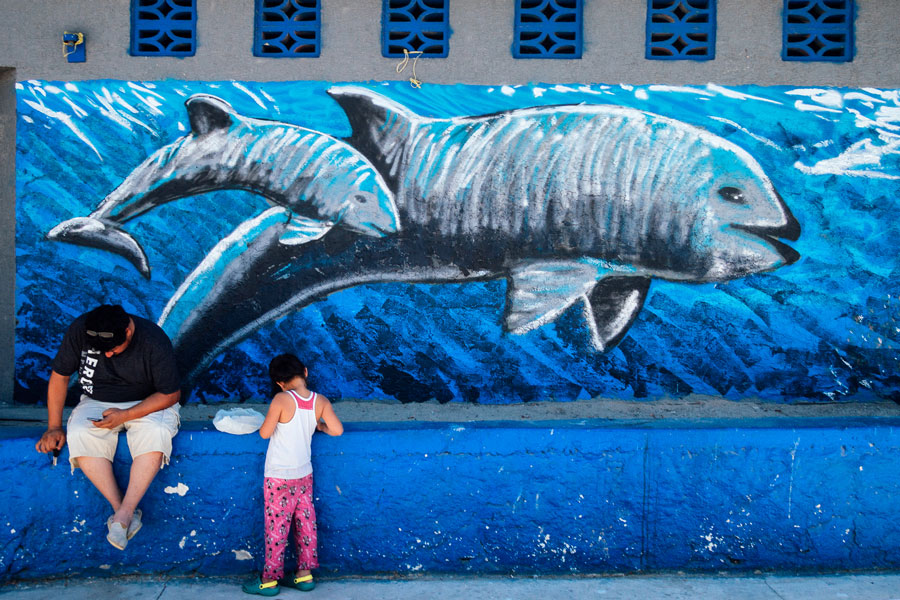
A family takes a break in front of a local vaquita painting at the end of the San Felipe boardwalk. Paintings like these are a common sight in San Felipe, where local artists use cityscapes as their canvas to share their interpretations of the vaquita. Images may not be reproduced without the express written permission of the Aquarium of the Pacific. Credit: Alex Espinosa

A family takes a break in front of a local vaquita painting at the end of the San Felipe boardwalk. Paintings like these are a common sight in San Felipe, where local artists use cityscapes as their canvas to share their interpretations of the vaquita. Images may not be reproduced without the express written permission of the Aquarium of the Pacific. Credit: Alex Espinosa
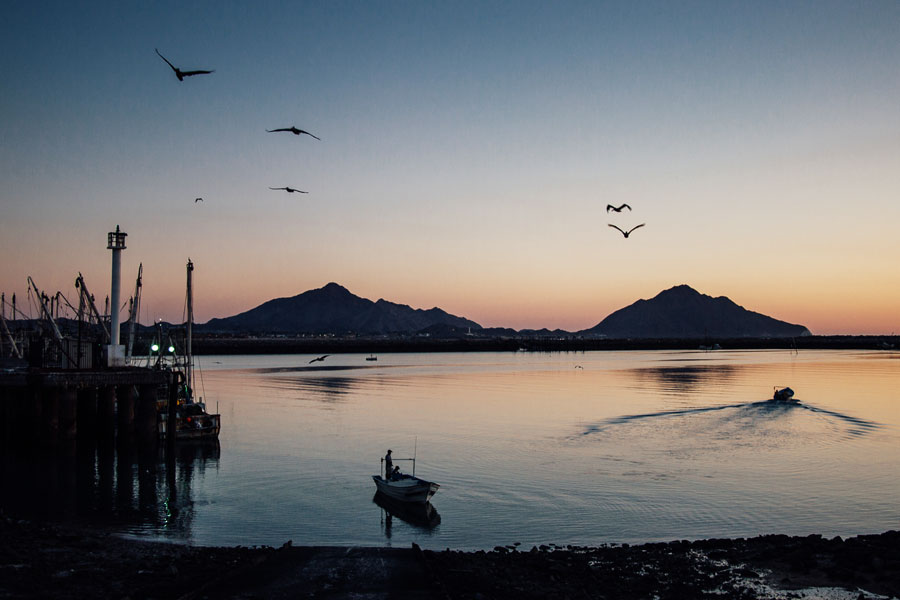
The highly productive waters of the Gulf are also excellent for fishing, producing fish, many species of invertebrates, including some of the world’s most valuable shrimp, sold for both domestic and U.S. consumption. Fishing is a major source of income for the local communities of San Felipe and El Golfo de Santa Clara. Credit: Alex Espinosa
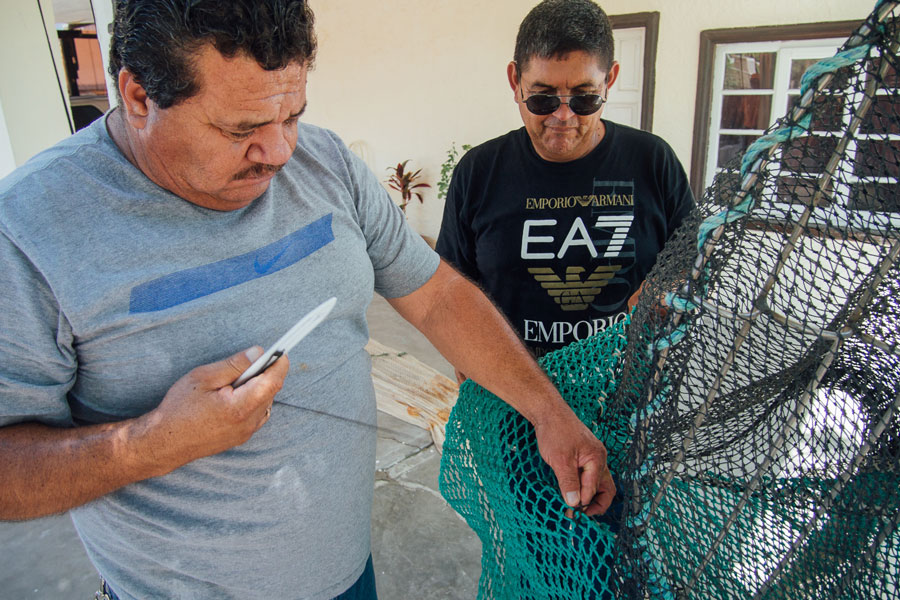
Carlos “Charlie” Samudio and his colleague Jose Luis Albanez fix a Turtle Excluder Device (TED) connected to the new lightweight trawl that does not endanger vaquitas. TEDs protect turtles from getting accidentally entangled in the fishing gear. They have been largely successful when used correctly in fisheries, as is required of U.S. and Mexican shrimp trawlers. Credit: Alex Espinosa
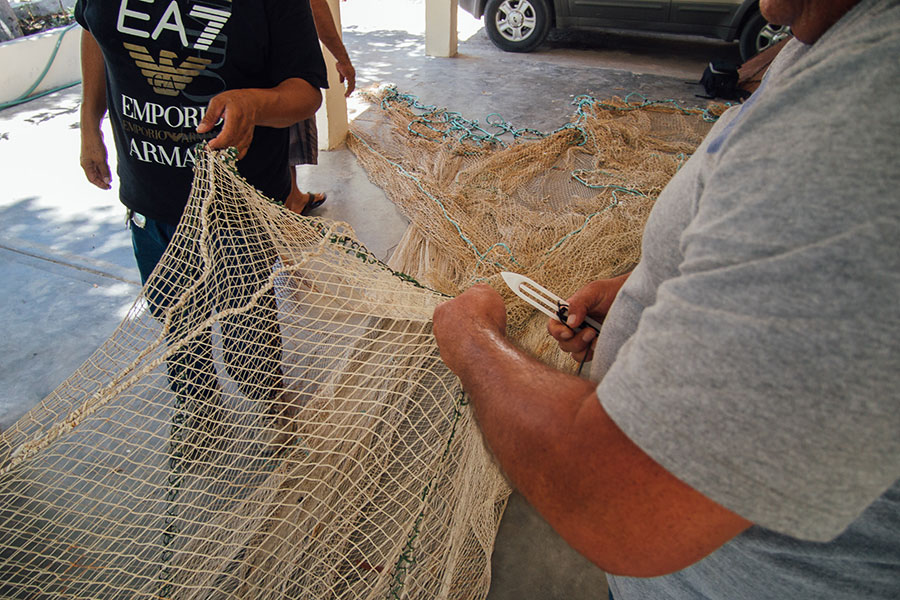
Carlos “Charlie” Samudio and his colleague Jose Luis Albanez fix a Turtle Excluder Device (TED) connected to the new lightweight trawl that does not endanger vaquitas. TEDs protect turtles from getting accidentally entangled in the fishing gear. They have been largely successful when used correctly in fisheries, as is required of U.S. and Mexican shrimp trawlers. Credit: Alex Espinosa
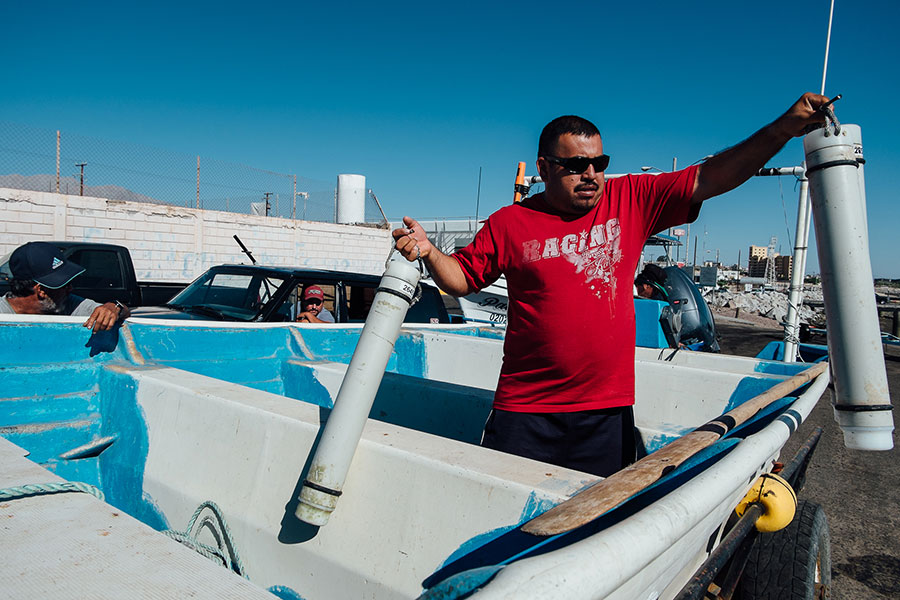
Armando “Muelas” Castro prepares the acoustic detectors, called CPODs, for deployment throughout the vaquita’s range. The CPODs record the nearly continuous clicks vaquitas make when they are searching for food in the murky waters of the northern Gulf of California. They are a powerful new tool that helps scientists to better estimate trends in the population over time by listening to the vaquitas’ sounds. Credit: Alex Espinosa
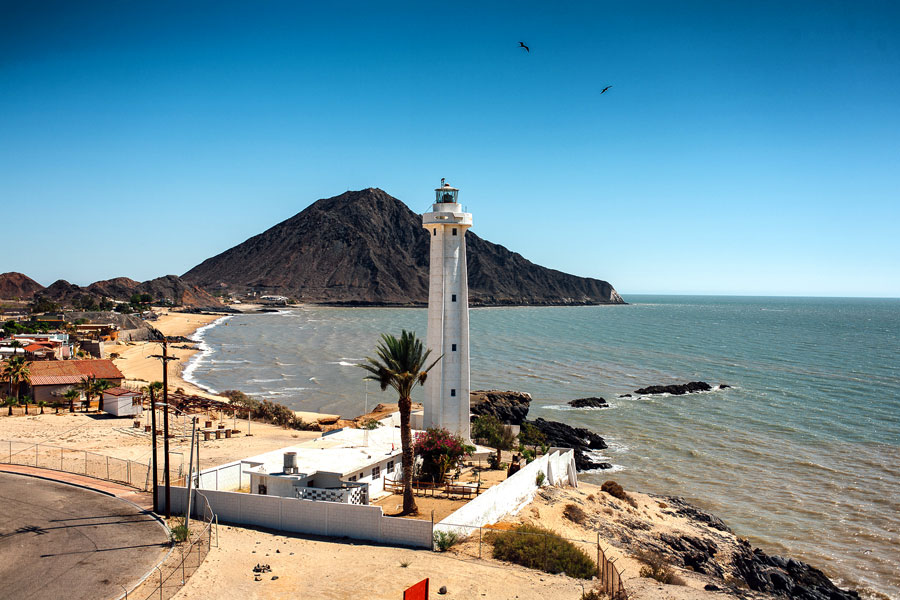
San Felipe lighthouse and cerro El Machorro (Totoaba Crest), which are also used by fishermen as a navigational reference. The range of the vaquita coincides with most of the Upper Gulf of California and Delta of the Colorado River Biosphere Reserve, one of Earth’s most extraordinary marine habitats supporting a diversity of fishes, birds, marine reptiles, and marine mammals. Credit: Alex Espinosa

Carlos Samudio (Charlie), and Antonio García (Tonicho), lead a discussion at the Islas del Golfo fishing cooperative regarding the current conditions of the local fishing industry and how to move forward to sustain their livelihoods while saving the vaquita. Credit: Alex Espinosa
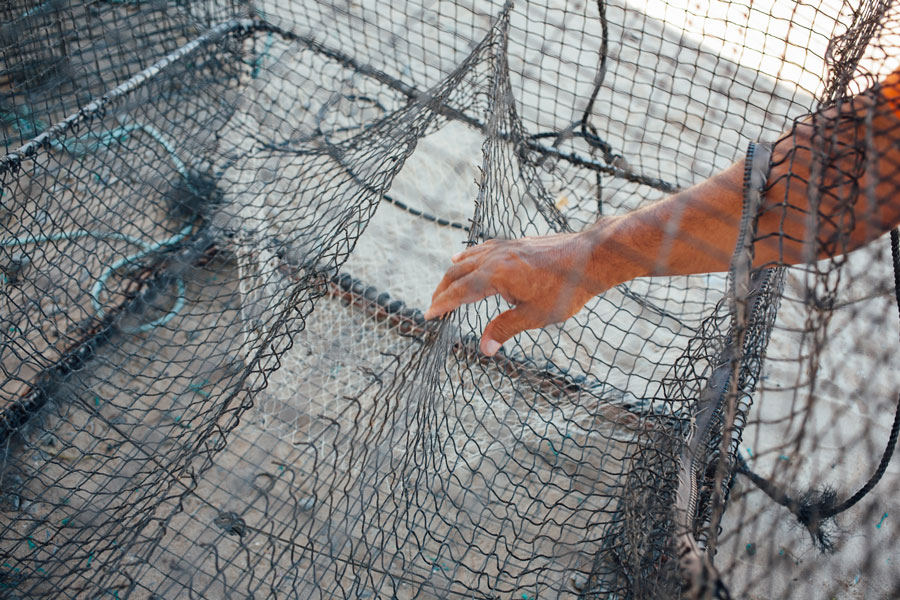
Fishermen analyze the craftsmanship of a collapsible trap. The traps were used in the 2014 and 2015 fishing tests, which were implemented in collaboration with scientists, government, and conservation organizations to determine if the gear could successfully catch fish, while reducing the risk to vaquita. *Image by Alex Espinosa* Credit: Alex Espinosa
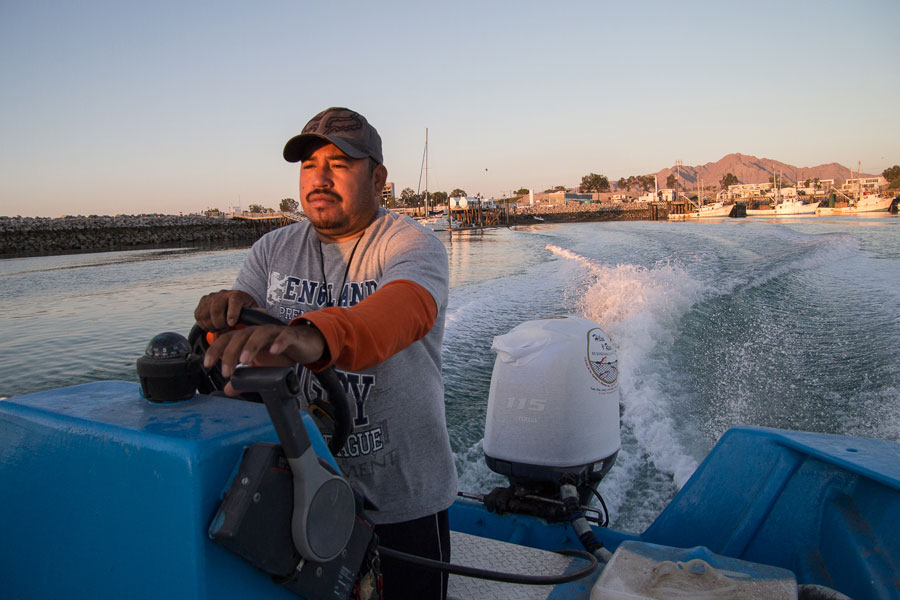

Fishermen analyze the craftsmanship of a collapsible trap. The traps were used in the 2014 and 2015 fishing tests, which were implemented in collaboration with scientists, government, and conservation organizations to determine if the gear could successfully catch fish, while reducing the risk to vaquita. *Image by Alex Espinosa* Credit: Alex Espinosa
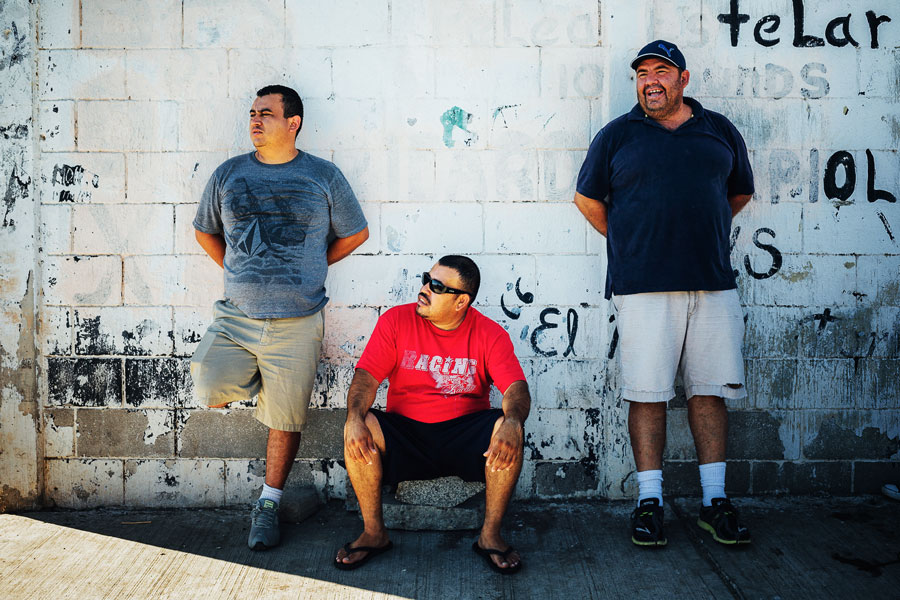
Armando “Muelas” Castro and Malacara at the San Felipe harbor, observing the weather before they go out for the day. Credit: Alex Espinosa

One of several artistic depictions of vaquita in the town of San Felipe. This rendering depicting the local marine ecosystem came from the winner of a children’s art contest. A professional muralist painted the winning drawing on a building that houses a bottled water company. The business was started as a community-led effort to provide alternative livelihoods for fishermen. Credit: Alex Espinosa
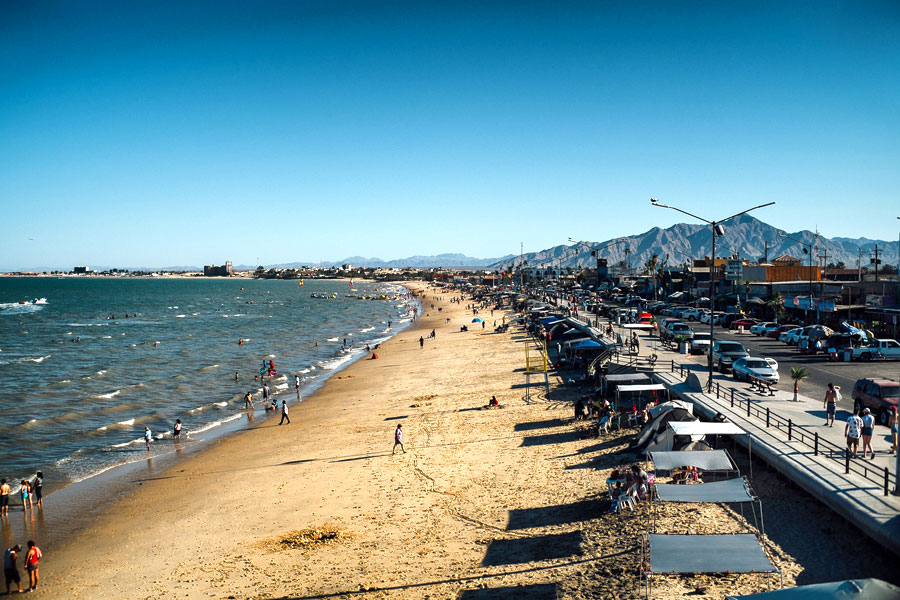
A panoramic view of the main beach in San Felipe on a summer day. Credit: Alex Espinosa
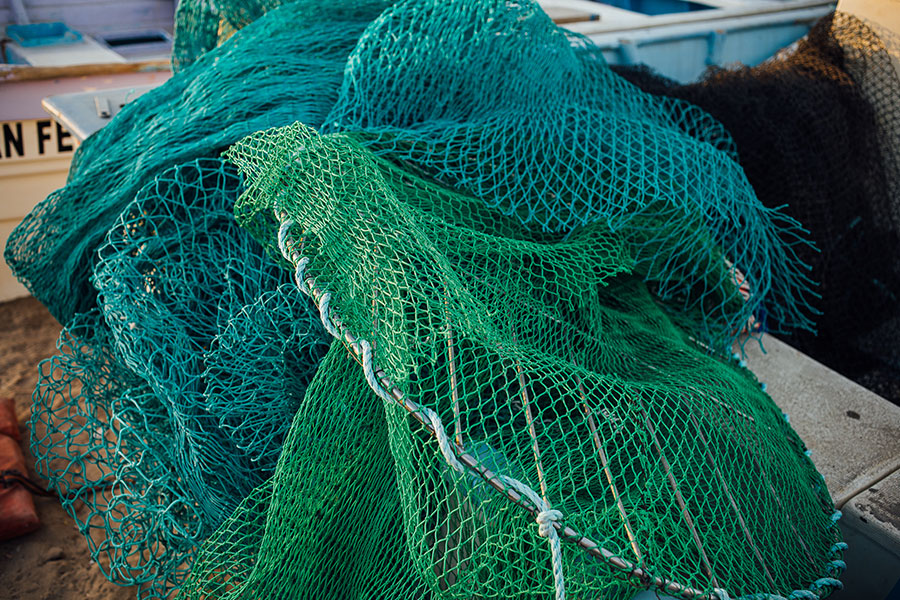
The new lightweight trawl gear with an attached Turtle Excluder Device (TED). Fishermen are working with scientists and government and conservation organizations to test the trawl gear to assess its ecological and economic viability. Thus far the trials are promising. Credit: Alex Espinosa
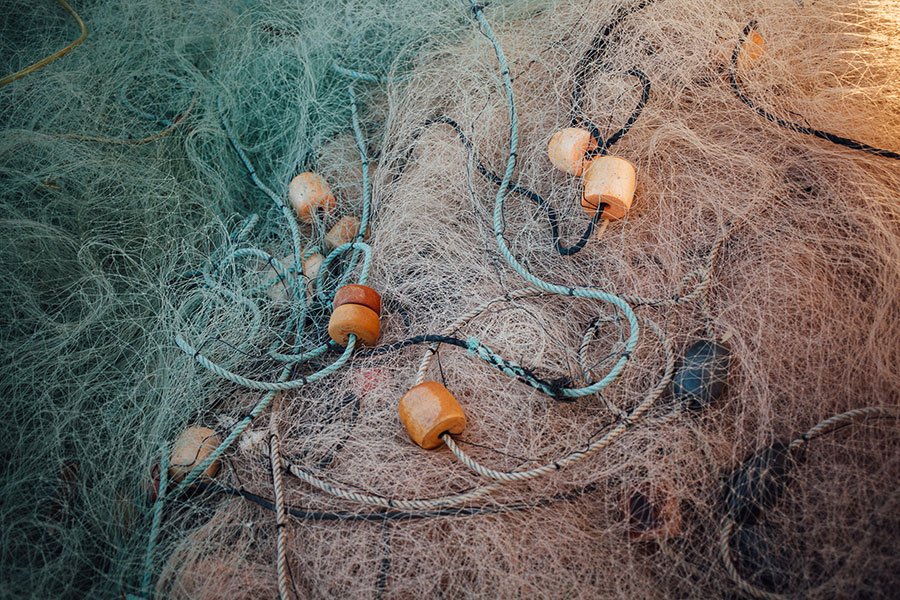
Harmful gillnets are being phased out of the Upper Gulf of California. Their filaments are so fine and transparent that marine animals, including vaquitas, turtles, sharks, and totoaba (many of which are endangered) get entangled in them and drown. Credit: Alex Espinosa
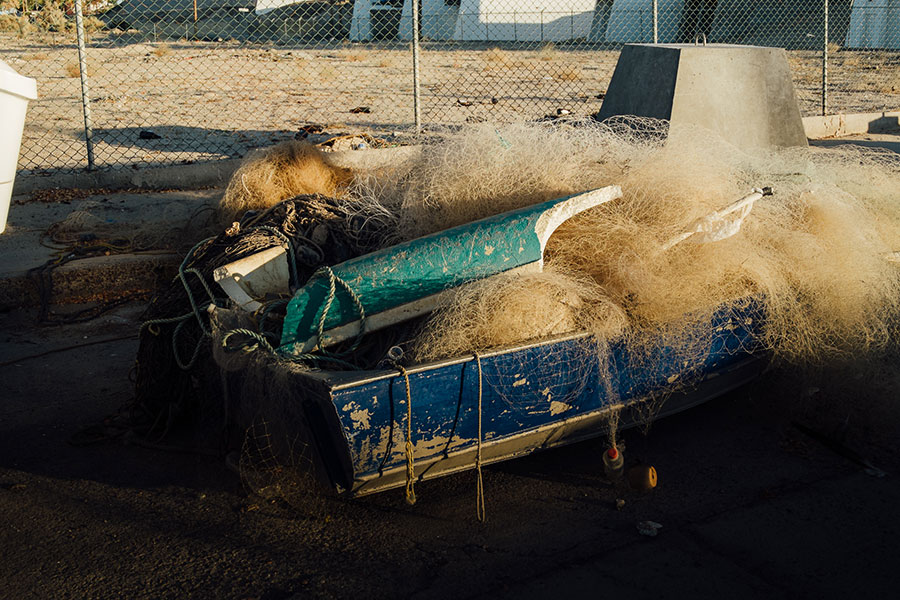
Unused gillnets in an old dormant boat. Fishermen who are caught with gillnets in the upper Gulf of California are subject to the confiscation of their gear and boats, fines, and possible jail time. Last year, there was an exception to the gillnet ban during corvina season. Corvina, a medium-sized fish that spawns in large aggregations in the upper Gulf of California during the spring, are an important source of income for the region. The fishery uses a different method that actively encircles the fish and was thought to pose minimal direct threat to vaquita. However, there is concern that illegal activities were masked under the cover of the legitimate licenses. Decisions about the use of gillnets in the corvina fishery for the upcoming season are currently underway. Credit: Alex Espinosa
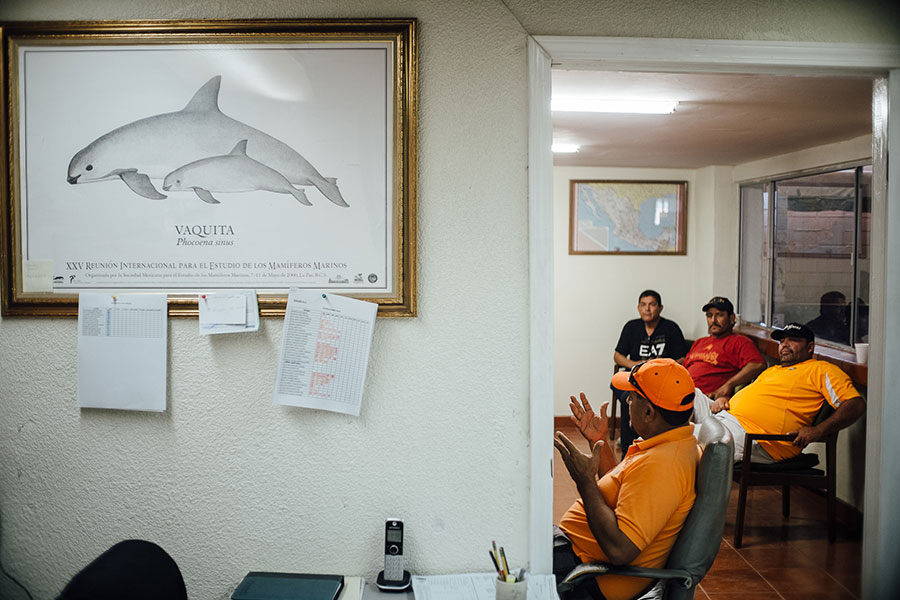
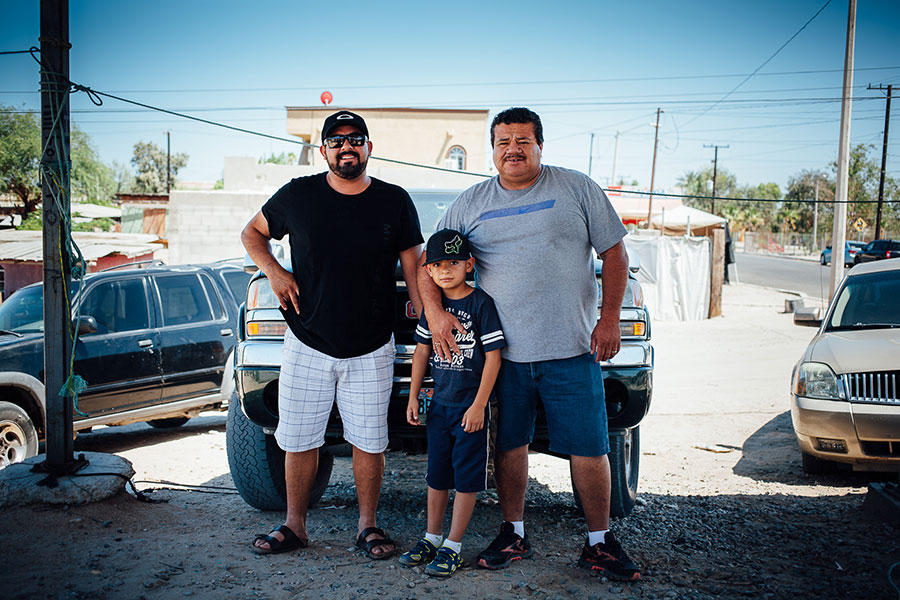
Three Generations. Carlos “Charlie” Samudio, president of Islas del Golfo fishing cooperative, his son (also a fisherman), and his grandson who aspires to be a race car driver when he grows up. Charlie and his fishermen counterparts’ efforts to fish in a manner that does not harm vaquitas is about looking out for future generations as much as it is about saving the tiny porpoise. Credit: Alex Espinosa
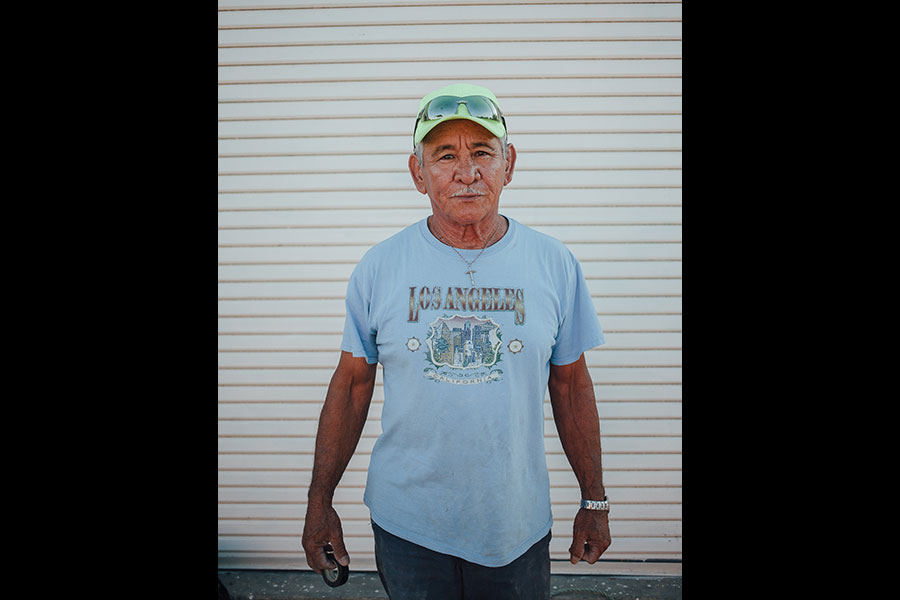
Javier “Chino” Valverde is a spiritual and active fisherman with fifty-five years of experience. He is very aware of the health of the natural environment and is often seen picking up trash and making efforts to collect plastic, which can be harmful to animals in the ocean. Credit: Alex Espinosa
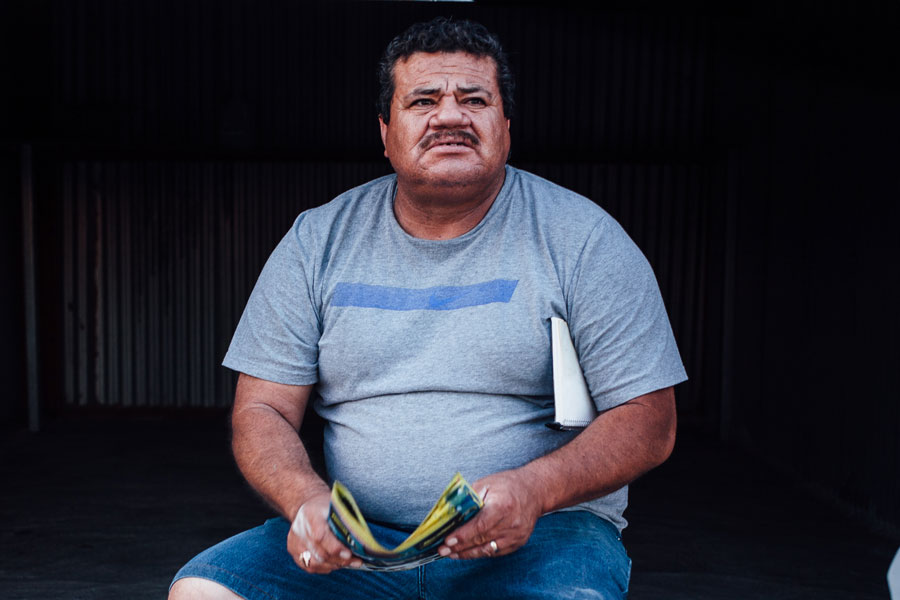
Carlos “Charlie” Samudio is the president of a local fishing cooperative. The father of two young fishermen, he concerns himself with the future of seafood for the next generation. Charlie is an amiable man and works hard at unifying the fishing community. Credit: Alex Espinosa
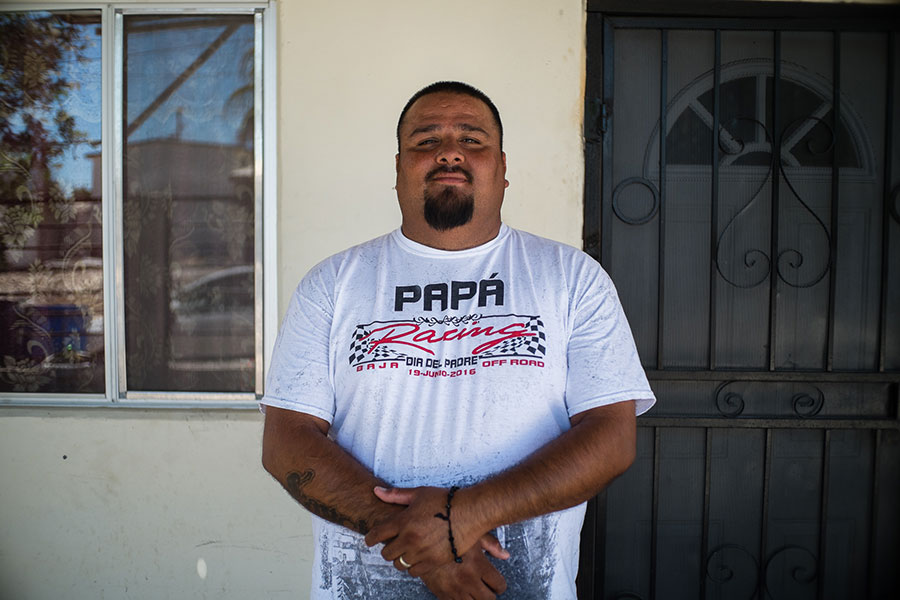
Raphael “Gordis” Sanchez is a young fisherman who has also been an onboard fisheries observer for the non-entangling, alternative fishing gear program. Gordis also takes Americans out on sportfishing trips, sharing his enthusiasm for the environment. He has seen vaquita several times, and each time he is amazed by them. He respects the concept of fishing sustainably, and passes these values down to his children. He is committed to using the sustainable alternative gear, no matter what happens to the vaquita in the future. Credit: Alex Espinosa

